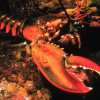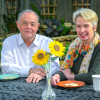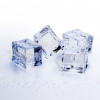A signal that underpins the narrowing of diseased arteries and, when deactivated, may hold the key to chemically unblocking them again has been described by scientists in the US.
Heart disease and strokes are the leading cause of death worldwide. They occur when blood vessels become furred up by fatty deposits called atheroma, which also contains dead or "apototic" cell debris, which the body seems to struggle to remove.
Now, writing in Nature, Stanford researcher Nick Leeper has discovered that, under the influence of inflammatory signals from the damaged tissue in the blood vessel wall, cells in the injured region switch on "don't eat me" signals that prevent the immune system from clearing them away. This fuels further inflammation and damage to the artery.
Using experimental mice predisposed to developing arterial disease, Leeper and his team showed that blocking an inflammatory signal called TNF-alpha, which are already used clinical to manage autoimmune diseases like rheumatoid arthritis, reduced the pace of arterial damage in the animals by suppressing levels of the "don't eat me" molecule, which is called CD47.
An even more powerful effect was achieved by administering antibodies to block CD47 itself, which produced a profound reduction in artery damage in the mice and even signs of disease reversal, suggesting that the strategy could chemically unclog arteries in-situ.
Data from animals with an artificial form of a human disease must always be interpreted cautiously. The animals receiving the treatment also became anaemic, suggesting that blocking the natural action of CD47, which helps to spare healthy tissues from immune attack, may have significant side effects.
Nevertheless, Leeper is gently confident that they might have a new strategy to tackle both the cause and consequences of arterial disease.
"By adjusting the dose of the anti-CD47 treatment we were able to achieve a balance between the anaemic effect and the vascular effects. This is something we'll need to look at very carefully going forward..."
References
- Previous Birds help humans to find honey
- Next Densest Data Storage Yet










Comments
Add a comment